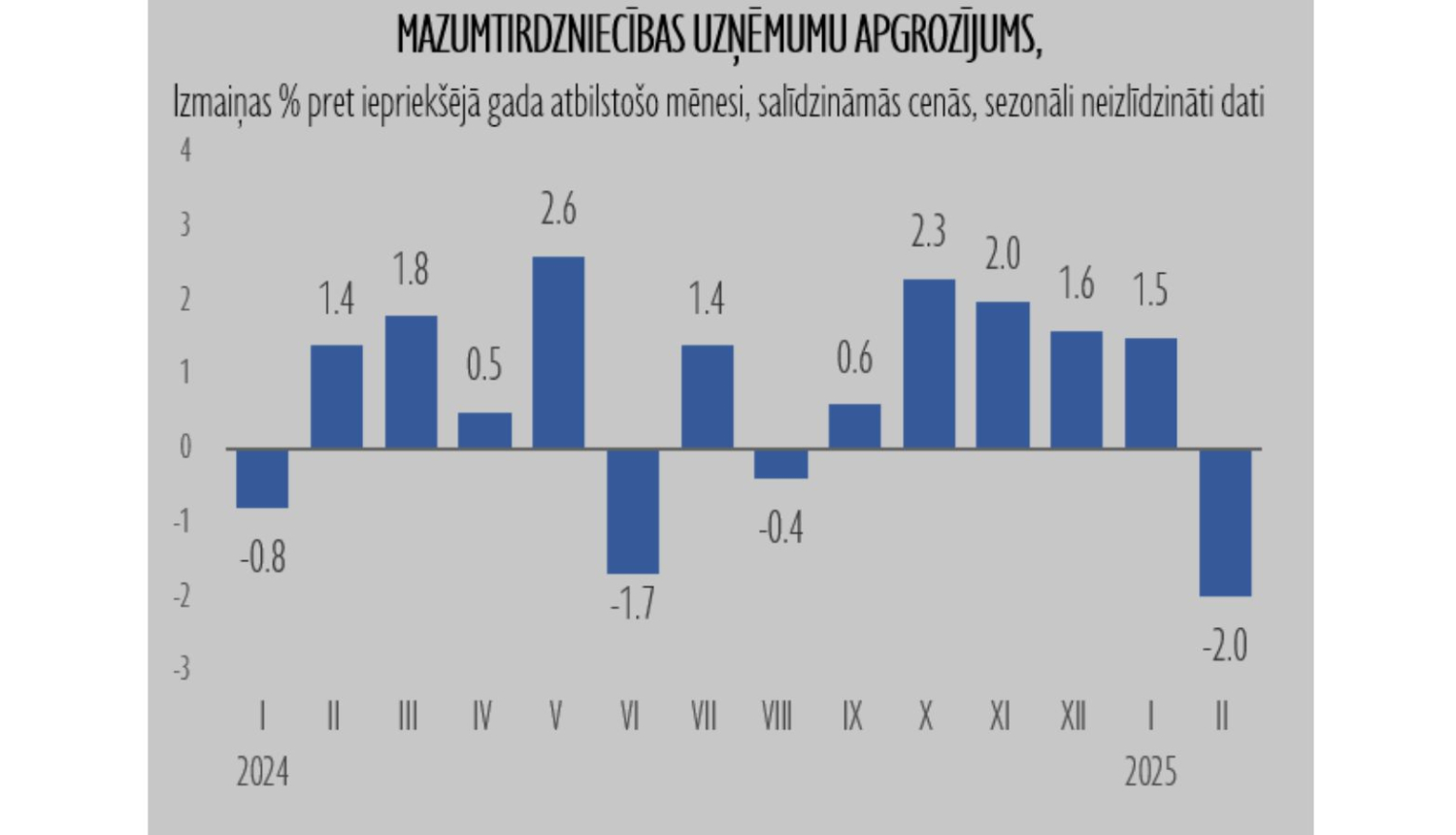Translated using ChatGPT service.
In February 2025, following growth over the previous five months, retail trade turnover declined. Over the year, the total turnover of retail enterprises in constant prices decreased by 2.0% (based on non-adjusted data).
This was mainly influenced by the number of days in February (due to the leap year in 2024), as well as rising food prices.
A decline in retail volume is also observed on a monthly basis. In February, compared to January, retail trade turnover decreased by 1.0% (seasonally adjusted data), driven by a drop in both food and non-food product groups.
Over the year, retail trade turnover fell sharply for food products, moderately for non-food products, while fuel retail turnover increased significantly.
In February, compared to the same month of the previous year, non-food retail trade turnover decreased by 2.6%. It declined across all main non-food product groups, except for:
-
Information and communication technology equipment (increase of 6.9%),
-
Flowers, plants, seeds, fertilizers, pet animals and pet food (increase of 5.3%),
-
Sports goods and games (increase of 1.5%),
-
Household electrical appliances in specialized stores (increase of 1.3%), and
-
Metal products, tools, construction materials, and plumbing (increase of 0.9%).
The steepest declines in February, compared to the corresponding period of the previous year, were in:
-
Clothing, footwear, and leather goods retail trade (down by 12.2%),
-
Textiles, carpets, floor coverings, wallpapers, furniture, lighting equipment, and other household articles (down by 12.0%), and
-
Books, newspapers, stationery, audio and video recordings (down by 11.1%).
More moderate declines were seen in:
-
Pharmaceutical and medical goods (down by 2.5%), and
-
Cosmetics and toilet articles (down by 2.1%).
Retail trade turnover for watches, jewelry, and other miscellaneous goods remained unchanged.
By place of sale, turnover continued to decline in February compared to the same period of the previous year:
-
Retail trade in stalls and markets (down by 6.7%),
-
Other retail trade outside shops, stalls, and markets (down by 2.4%), and
-
After seven months of growth, retail trade via mail order or the internet also fell (down by 5.8%).
Retail trade turnover for food products declined significantly on an annual basis—by 4.3%—mainly due to the high base level in February of the previous year. Food prices also continue to rise, which affects turnover in this sector.
Fuel retail trade turnover at petrol stations in February increased sharply—by 4.0% compared to February 2024—mainly due to lower fuel prices than in the same period of the previous year.
Overall, in January–February of this year, retail trade turnover was 0.3% lower than in January–February 2024.
Considering current tax changes, both employee wages and pension amounts after taxes are increasing, which could boost consumer activity and private consumption in the coming months. Stabilizing prices and declining interest rates are also expected to ease the financial situation of households and support purchasing power growth.



